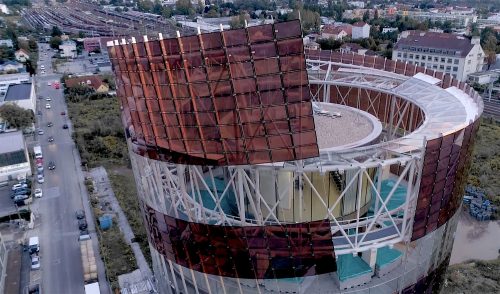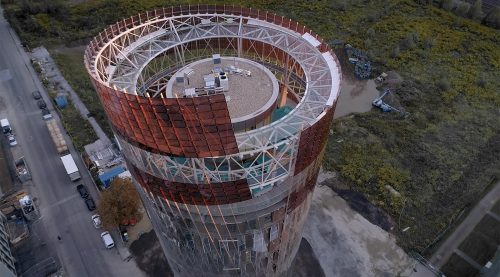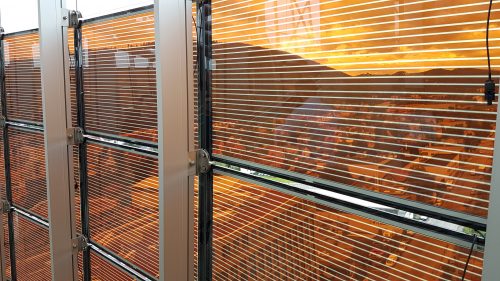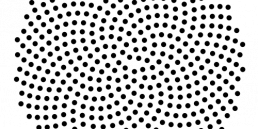Professor Michael Grätzel’s future flashed before his eyes in 1973 when OPEC stopped supplying the United States and Western Europe with oil.
Foreseeing a time when fossil fuels would be depleted, and freshly armed with a PhD from the Technical University of Berlin, the Swiss chemist decided to devote his life to developing alternative, renewable sources of energy. Today, more than 40 years later, the 73-year-old professor at the École Polytechnique Fédérale de Lausannes has racked up a slew of achievements — but none more revolutionary than dye-sensitized solar cells.

Grätzel sought to design a solar cell that could absorb sunshine and convert it into electrical energy using similar chemical reactions as plants during photosynthesis. Like a green leaf, his invention — now called either dye-sensitized solar cell (DSSC), dye-sensitized cell (DSC), or Grätzel cell — uses a dye molecule to harvest sunlight, while a different component transports the resulting electric charge across the cell. By separating these functions, over time Grätzel and others have managed to significantly drive down the cost of producing solar energy — in part because the semiconductor of conventional silicon cells has to perform both functions. The material has to capture and transport the energy, which means it has to be incredibly pure (and costly). Not only that, but DSCs can convert all visible light, even indoors, on both sides of its face. It is the only photovoltaic technology that mimics photosynthesis to produce electricity.
In 1977, Grätzel became interested in “colloidal semiconductor systems” or quantum dots. Although explaining his research gets really technical here, his main goal was to use materials that didn’t have to be so pure, or expensive, yet produced a decent solar conversion rate (to maximize efficiency). In the early 1980s, he and his colleagues pioneered a way to prepare colloidal semiconductor solutions, and later discovered, as he tells Spectrum in a 2006 interview, that “ruthenium complexes endowed with carboxylated bipyridine ligands were anchored firmly on the surface of the colloidal titanium dioxide particles and injected electrons into the conduction band of these nano-dots with practically 100 percent quantum efficiency. Importantly the injection from the excited sensitizer was many orders of magnitude faster than electron recombination with the ionized sensitizer, allowing charge separation to be sustained for many milliseconds” (emphasis added). In other words, they nailed a kind of artificial photosynthesis, and “a new solar cell was born.”
To say that Grätzel’s real challenges started there would be an understatement. So wild was his invention, he had to convince colleagues it really worked. In the Spectrum interview, he said he traveled around with one of his cells and a fan to “demonstrate the light to electric power conversion effect.” Plus, he needed funding to enhance the design. The manager of the Swiss Energy office agency he approached said he had to demonstrate the cell’s stability over a nine-month-period before they would provide any financial support. This he did, and the funding came through. Then, word quickly spread of his invention; while such instant recognition was a boon, in a sense, Grätzel was constantly under the hammer to improve his design’s performance. The world wanted, nay, needed, his solar cell.

In 1988, an auspicious meeting set in motion a series of events that would lead to the first truly viable DSC. After one of his lectures at Northwestern University in Illinois, a master student at the University of Wisconsin introduced himself to Grätzel. Brian O’Regan and colleagues had developed a colloidal TiO2 membrane membrane for water filtration that he suggested might improve the solar cell’s performance. The pair eventually published their first Nature article together in 1991, and today, a small spark in one man’s mind has evolved into a multimillion dollar industry. A 2016 Grand View Research report projected the dye-sensitized solar cell market growth to be worth $130.6 million by 2022.
Now more efficient than polycrystalline silicon solar cells, less vulnerable to high temperatures, more flexible, and (take note future LAGI participants) colorful, DSCs have a wide range of applications. In September 2017, one of the world’s most sophisticated towers in Graz, Austria, was wrapped in about 1,000 of them. According to Ivano Pano at H.Glass, the company that supplied the Science Tower’s solar cells, they are capable of an annual production of up to 25,000 kWh. In Sweden, CEO Giovanni Fili says his company, Exeger, has designed proprietary DSCs that are mostly used in E-readers and wearables. He says they print up to 300,000 square meters of solar cells each year.

Grätzel is noticeably pleased with how his invention has evolved, noting that his original Nature article is one of the top 100 most-frequently cited in all of Science. “In Science!” he says. But now he has returned to his initial goal of using the sun to produce fuel. He explains why: “A lot of people now say, well, in the future there will perhaps be too much electricity and we need to store the electric power in batteries. But batteries are expensive and capacity is very limited. So fuels are a better option.” Not at all ready to rest, Professor Grätzel is currently investigating how to use electricity to split water into hydrogen and oxygen, or reduce CO2. “All of this is now going on,” he says. “That’s what our research is about.”
Image of Professor Michael Grätzel by Patrik Tschudin; Science Tower images via H.Glass, XYZ IMAGES via Exeger
Tafline Laylin is a freelance communicator and journalist who strives for global environmental and social justice. Her work has appeared in The Guardian, The Atlantic, OZY.com, and a variety of other international publications.
Related Posts
1 Comment
Add comment Cancel reply
This site uses Akismet to reduce spam. Learn how your comment data is processed.


Unfortunately, I have no idea about science, but I imagine it would be great if we would no longer need any oil or nuclear power anywhere in the world. I’m old, but I think a lot about the next generations who will have to live with all the environmental filth that we have now. And we didn’t know so much in time at all, so we couldn’t protest either.